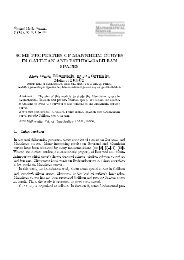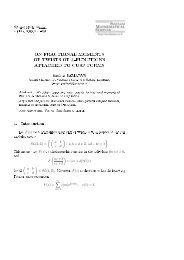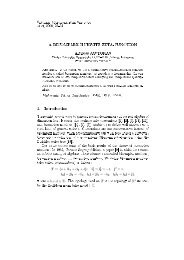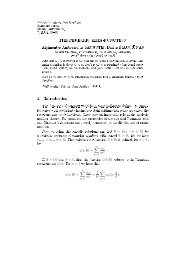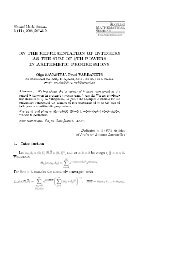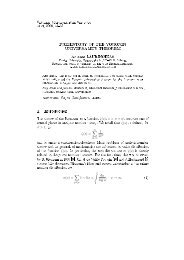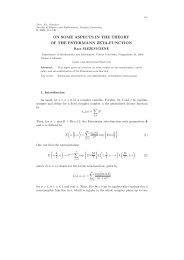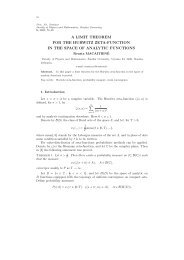POTENTIAL REPRESENTATION METHOD FOR WOODS-SAXON ...
POTENTIAL REPRESENTATION METHOD FOR WOODS-SAXON ...
POTENTIAL REPRESENTATION METHOD FOR WOODS-SAXON ...
Create successful ePaper yourself
Turn your PDF publications into a flip-book with our unique Google optimized e-Paper software.
42 A. J. Janavi£ius, D. Jurgaitisfor the Coulomb and short range potentials, using a modied method ofundetermined Lagrange coecients [4]. The presented theory can be used fora wide class of potentials, but in our investigations we mostly apply Woods-Saxon potential which is very useful for nuclear reactions rates calculationsin reactors, and for investigation of astrophysical phenomenon [1].In [7], we presented the analytical solution u(r) of the radial Schrödingerequationd 2 (udr 2 + k 2 L(L + 1)−r 2V (r) =V 0(1 + exp{ r−Ra)− cV (r) u = 0, k 2 = cE, c = 2m 2 ,}) (1)for the Woods-Saxon potential V (r) with potential parameters V 0 , a, R, wherem is a mass of nucleon (proton or nucleon). Using the Woods-Saxon potentialV (r) instead of a variable and substituting u(r) = φ(V (r)) exp{∓ikr}into (1), we obtain, for the case L = 0, the following dierential equationV Vd2 d 2 φ(±k, V )dV 2 + (Vd 2 + V d(V ∓ 2ikaV 0 )) dφ(±k, V )dV−ca 2 V0 2 φ(±k, V ) = 0, V d = V (r) − V 0 . (2)Note that in quantum mechanics scattered waves with orbital quantum numberL = 0 are called s-waves. Assuming that a solution of (2) satises thestandard boundary condition [7]we can express it in the following waylim φ(±k, V ) = 1, (3)r→∞φ(±k, V ) =∞∑V n d n . (4)n=0After substituting (4) into (2), the following recursion relationd n+1 = (ca2 V0 2 + n(2n + 1 ± 2ika)V 0)d n (±k, V ) − (n − 1)nd n−1(n + 1)(n + 1 ± 2ika)V 20was obtained [7]. The solution (4) satises the boundary condition (3) whend 0 = 1, and can dene the useful expression of scattering matrixS(k) L=0 = φ(+k, V p)φ(−k, V p ) ,lim V (r) = V p, (5)r→0



